It has a market capitalization of just $40.8 million, but Monarques Gold (TSXV: MQR; US-OTC: MRQRF) has a lot going on across its 300 sq. km of gold properties in Quebec.
Its flagship Wasamac project, 15 km west of Rouyn-Noranda in the heart of the Abitibi, contains 30 million measured and indicated tonnes grading 2.70 grams gold per tonne (or a contained 2.6 million oz. gold) that could be mined from underground as a bulk-mining operation.
Monarques is on track to complete a bankable feasibility study on the project in December.
That, says Monarques president and CEO Jean-Marc Lacoste, should convince the market that the company is undervalued, and should be taken seriously.
“This is one of the biggest unexploited gold resources on the Cadillac fault,” Lacoste says in an interview. “There is no other project on the Cadillac fault in the gold space that represents this big an asset, at this development stage.”
Wasamac could produce between 150,000 and 200,000 oz. gold a year for at least a decade, he says. It would create 400 jobs, and could be put into production — “at the speed we are going” — by 2022.
“We will let the feasibility study show the world the potential and then we will definitely sit down with potential partners to put this project forward,” he says. “Wasamac will need $400-million-plus in capex, so we’ll need a partner. We can’t come up with that size of money.”
Capex could be lowered if Monarques doesn’t end up building a mill, however, and given that the project sits on the Ontario Northland Rail system, any mining company that wants to partner with Monarques could ship the material to another mill, saving $150 million.
Lacoste likens the project to Agnico Eagle Mines’ (TSX: AEM; NYSE: AEM) Goldex and Alamos Gold’s (TSX: AGI; NYSE: AGI) Young-Davidson mines — both underground, bulk-mining operations, within 100 km of Wasamac.
“It’s reasonable grade when you compare it to some other underground operations,” he says of Wasamac’s 2.7 grams gold per tonne. “Goldex is mining 1.8 grams and Alamos is mining 3 grams, so Wasamac’s grade is decent, but you’d need to have north of 4,000 to 5,000 tonnes per day to make it profitable, and in our case, we’ll be doing 6,000.”
The mineralized widths at Wasamac allow for a much larger bulk-mining operation.
“The zones are humongous — 70 metres wide by 200 to 300 metres long — so it’s not your typical, narrow-vein mine in the Abitibi,” Lacoste says. “It will be easier to process because we’re not following 1- to 2-metre veins. These are much wider. It’s more like disseminated 20- to 70-metre zones of widths, so it’s much more disseminated to mine and follow.”
In August Monarques acquired property next to Wasamac that it plans to use for mining facilities. The property is further away from the local community and includes a more than 1 km stretch along the Trans-Canada Highway and Ontario Northland Railway.
Gold mineralization on the 7.6 sq. km property was found in 1936, and the historic Wasamac mine produced gold intermittently between 1965 and 1971. During that time, 252,920 oz. gold was produced at a grade of 4.16 grams gold.
While Wasamac makes up 80% of the company’s net asset value, Monarques’ other assets in the province are noteworthy, too.
At its Croinor gold project — 50 km east of Val-d’Or — a 20,000-metre diamond drill program that kicked off in March has already confirmed grades for bulk-sampling areas, and continues to expand the deposit at depth and to the west.
Highlights of the program reported in the first week of September included 8.24 grams gold over 9 metres, with 26.38 grams gold over 2.6 metres, from 328 vertical metres below surface in hole 18-606. Another hole, 18-610, returned 5.67 grams gold over 7 metres just below the 500-foot-level drift of the old Croinor mine. A third hole, 18-601, cut 5.30 grams gold over 1.1 metres from 336 metres below surface.
The Croinor deposit was discovered in 1940 and is hosted in a sheared diorite sill 3 km long by 60 to 120 metres wide. Mineralization is associated with pyrite found at quartz-tourmaline veins.
“The goal with Croinor — which is a fully permitted mine with a four-year mine life — is to try to increase the mine life to maybe five or six, or seven years, and if we can do that, the project could be a standalone, and it would be easier to finance,” Lacoste says.
The drill program will continue until Christmas and will help Monarques better understand the deposit’s high-grade zones.
Monarques is also busy on its McKenzie Break and Swanson gold properties, which are near the company’s Camflo and Beacon mills, and which it bought from Agnico in December 2017 for $4.6 million.
The two properties are 30 km apart and offer potential for open-pittable resources.
At the McKenzie Break — 25 km north of Val-d’Or, 20 km north of Monarques’ Beacon mill and 9 km south of the rail link with Barraute and Senneterre — a 8,350-metre drill program began on Sept. 13.
The 3.3 sq. km project hosts a high-grade gold deposit and has surface and underground infrastructure — including a ramp 80 metres below surface.
Monarques finished a pit-constrained and underground resource estimate for the project in June. McKenzie Break has a pit-constrained indicated resource (at a cut-off grade of 0.52 gram gold) of 939,860 tonnes grading 1.59 grams gold for 48,133 contained oz. gold and an inferred resource of 304,677 tonnes grading 1.52 grams gold for 14,897 oz. gold.
The underground resource (at a cut-off grade of 3.5 grams gold), measures 281,739 indicated tonnes grading 5.90 grams gold for 53,448 contained oz. gold, and 270,103 inferred tonnes grading 5.66 grams for 49,130 oz. gold.
At the Swanson property, 65 km from the Beacon mill and 12 km northeast of Barraute, Monarques completed a pit-constrained and underground resource estimate in June.
Swanson’s total indicated resource is 1.64 million tonnes grading 1.86 grams gold for 98,051 contained oz. gold and an inferred resource of 72,000 tonnes grading 2.99 grams gold for 6,917 contained oz. gold.
Eventually, mineralized material from the 51 sq. km project could be sent by train to Monarques’ Beacon mill, as the rail line is directly on the property.
Swanson already has a 500-metre ramp down to 80 metres’ depth.
Monarques’ other significant asset is the Beaufor underground gold mine, 20 km northeast of Val-d’Or. The mine will go on care and maintenance on Dec. 14, because it was losing money. The company has found mineralized zones at the mine, but can’t reach them without more development.
“We wanted to give ourselves some breathing room so that when we restart it in the coming months and quarters, we’d have many years of mine life in front of us,” he says. “It was a tough decision, but our shareholders wanted to make money — and we were losing money.”
The company will continue exploration at the mine, however.
As of June 30, Monarques had $15 million in the bank — $4 million of it flow through that will be spent before year-end.
The junior has no debt, although it owes Agnico $4-million worth of stock over the next four years, as partial payment for the McKenzie Break and Swanson properties.
In the meantime, Monarques needs to get its valuation to “the right level,” Lacoste says.
Its stock is trading at 18¢ a share within a 52-week trading range of 14¢ to 42¢.
Says Lacoste: “It’s a bit scary in this environment, but we have a lot going on, and we are an up-and-coming force in Quebec.”

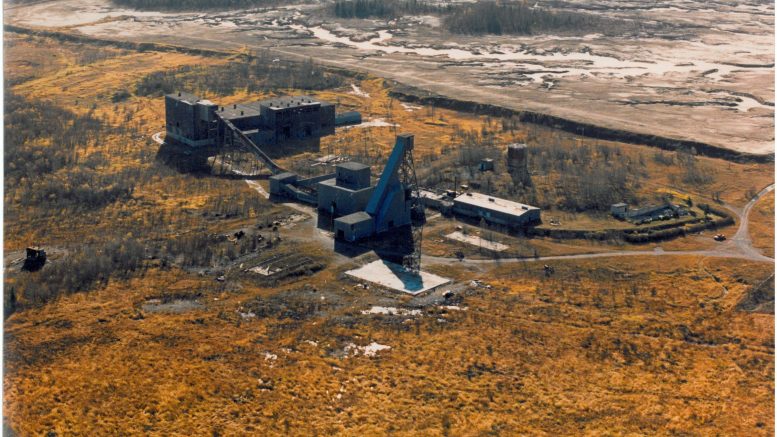
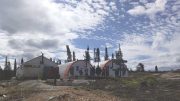
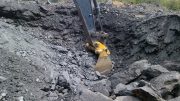
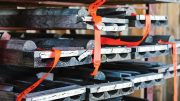
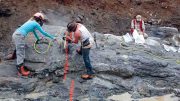
Is this hoist capable of hoisting 6000 t/d?